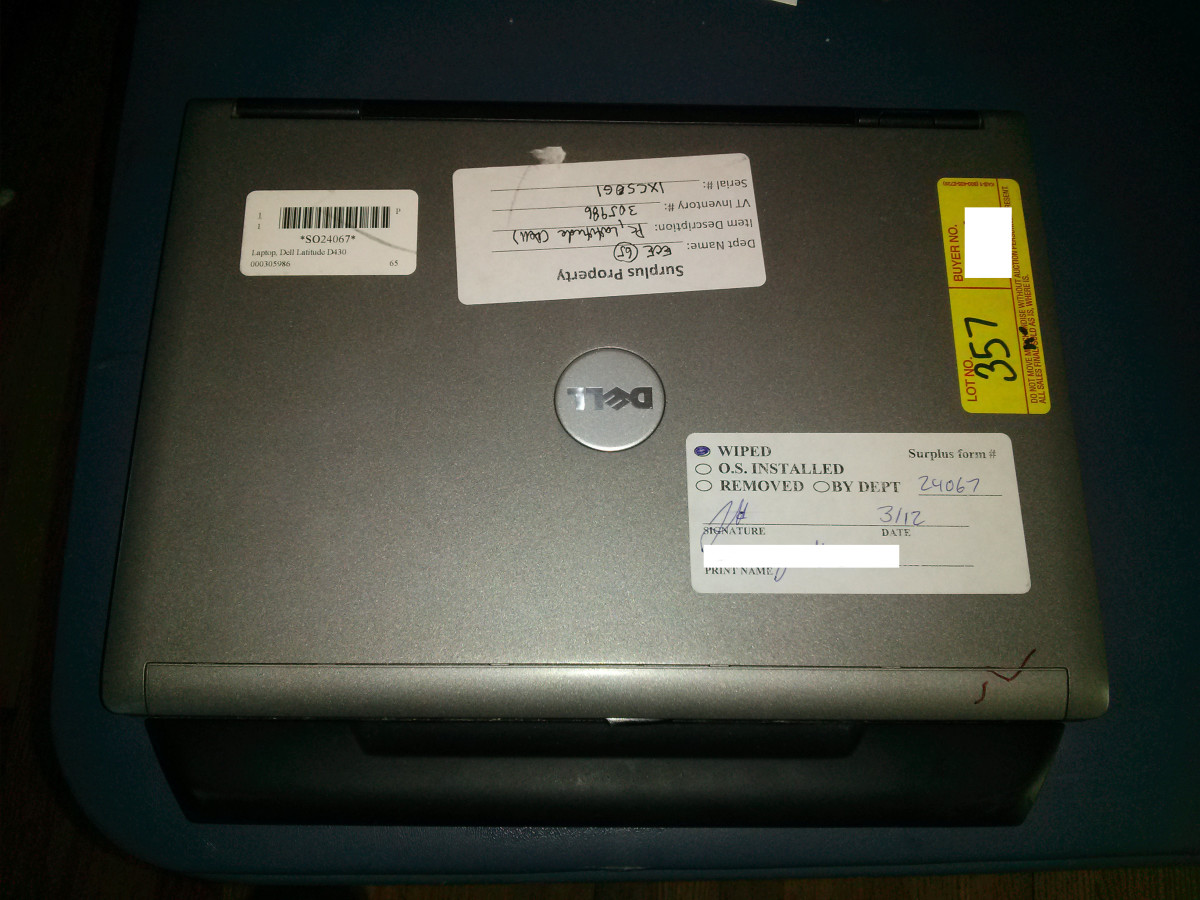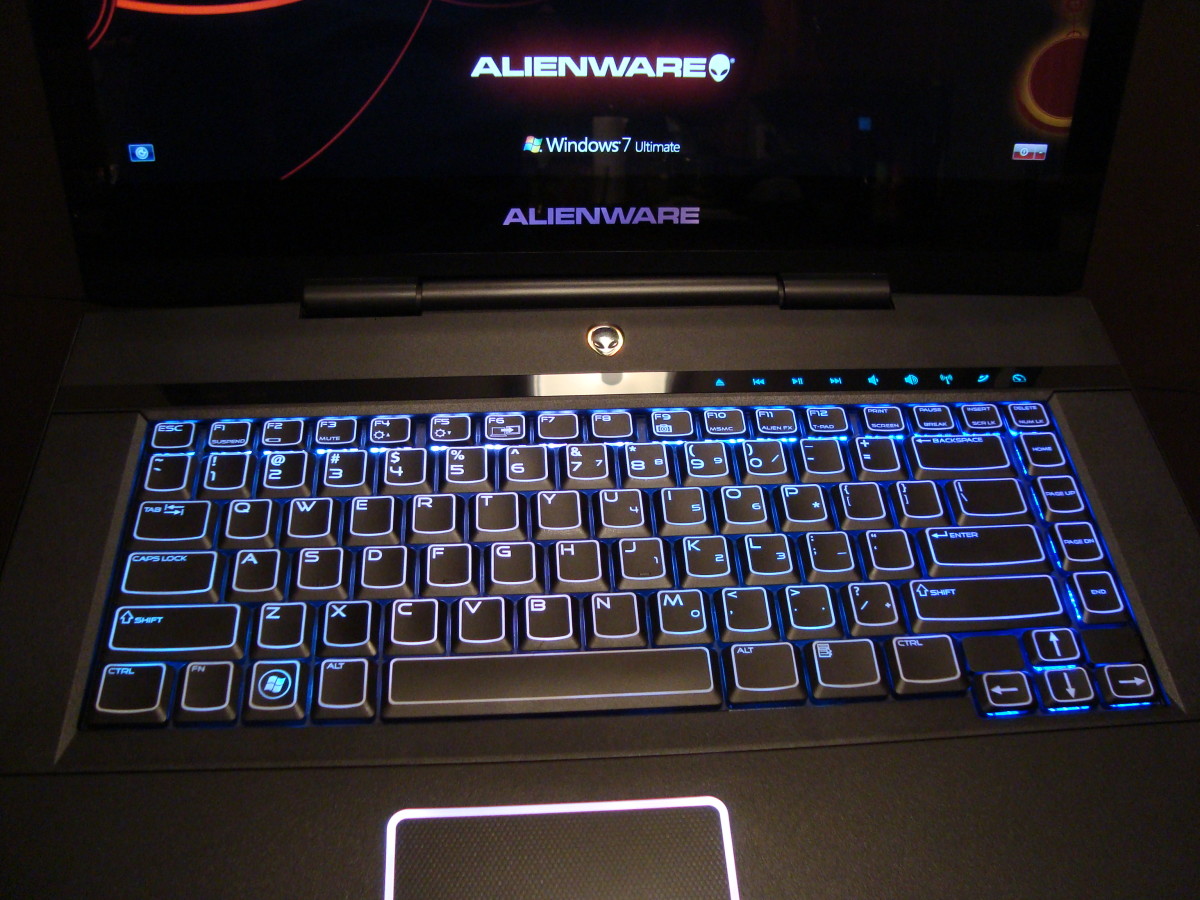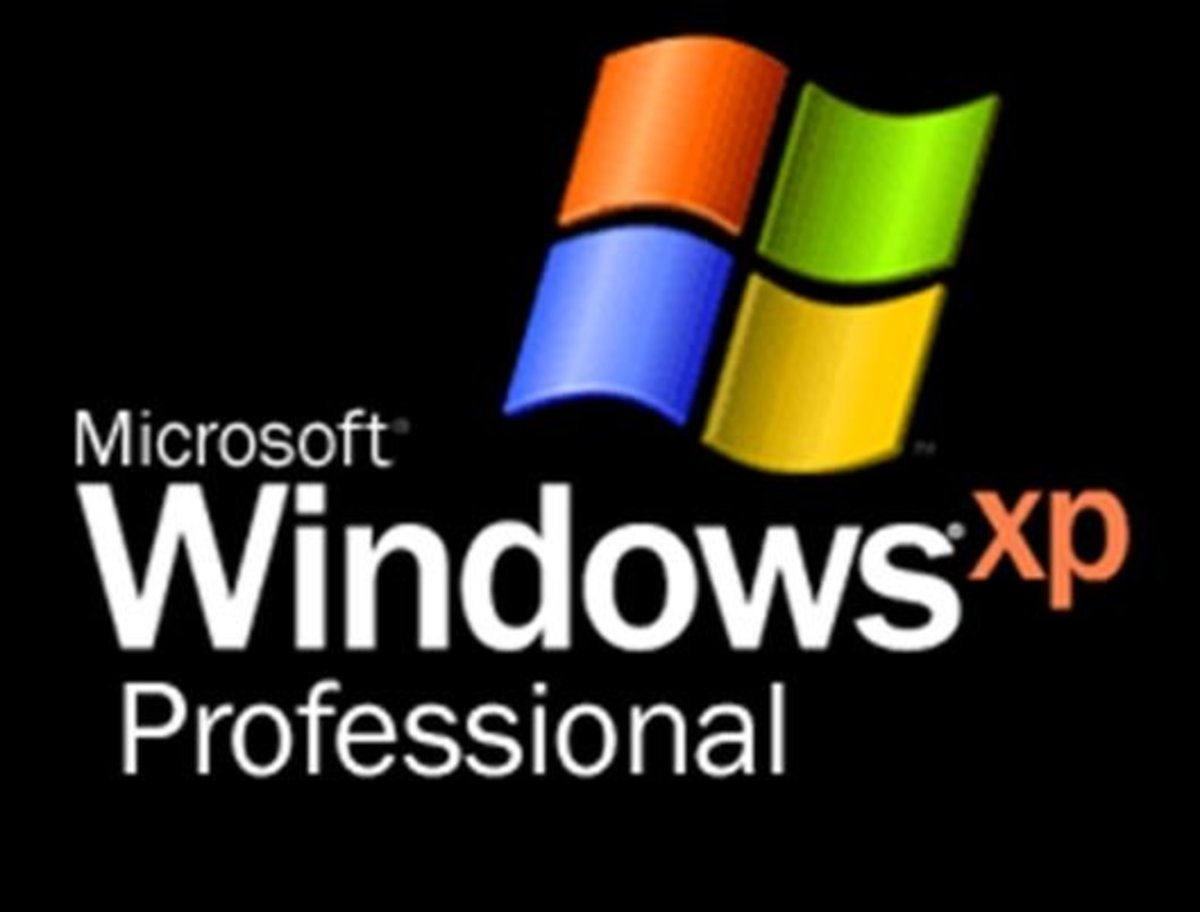- HubPages»
- Technology»
- Computers & Software»
- Operating Systems
Building the Ultimate Budget Linux Tablet part 1

I've been playing around with Linux systems for some time now, and in recent years have grown very fond of Ubuntu and Ubuntu based distributions. Xubuntu, Lubuntu, Kubuntu, Linux Mint and all of the other distributions based on Ubuntu (and there are a ton of them out there) have shown how versatile Linux systems can be. (And speaking of versatile, I've even set up some dual boot systems, just so I could continue to use Windows programs that WINE couldn't handle.) All of this brings me to my latest project, building a convertible tablet running a Linux OS.
For the past few months, I have been using a Dell Vostro 3350 as my travel laptop. This was an upgrade from a Dell Latitude 2100 netbook which hadn't served my purposes well (I'll explain later). For the most part, I really liked the Vostro. It had a Core i5 processor, 8GB of RAM, a fast 80GB Solid State Drive, and a 13-inch widescreen that straddled the gray line between too-small and too-big screens. Unfortunately, my wife's archaic Dell Latitude D430 began experiencing problems, and rather than try to repair it, I decided to scrap her laptop and giver her mine. This left me without a laptop, which is where this story really gets started.
Being on a budget, I wanted to keep my costs down. At the same time, I had experienced budget laptops in the past and was often disappointed. This meant buying used, but not just any used. No, what I would want is to take yesterdays premiere laptop, add a little this and that, and have the ultimate laptop... at least the ultimate for my needs.
My Laptop Requirements
The “ultimate laptop” is going to mean different things to different people, all depending what their needs are.
- Keyboard Most of my time at the laptop is spent writing. That means I need a comfortable keyboard that isn't cramped. Keyboard flex can be a major annoyance when writing, so a rigid keyboard was a must. I also needed a track pad that would be easy to manipulate. A touch screen would be nice, but not a necessity.
- 12 to 13-inch screen I have had everything from netbooks with a tiny 8.9-inch screen to laptops with 17-inch screens. I love big screens (my desktop computer uses a triple monitor display), but since this laptop is for working on the go, I needed to balance screen size with portability. I didn't want to go too small, as my eyes aren't what they used to be, and straining to look at a little netbook screen gives me a headache. My Vostro had a 13-inch widescreen, and that has seemed like the perfect compromise between screen size and portability.
- Speed When I had the netbook, I was often irritated by how slow it was. Since I mainly used writing software (which isn't very resource-intensive), I was fine once I started writing. But waiting for everything to boot, running photo software, and anything that required much out of the computer was agonizing. Never again, I had said.
There are a few things that can contribute to a slow computer, and I decided to try to address as many as possible. For starters, I wanted a dual core processor of at least 2 GHz per core. I also wanted plenty of RAM... 4GB at the minimum. And finally, I wanted a fast hard drive. I had been impressed with the speed of the solid state drive (SSD) in my Vostro, so I knew this was something I would want.
- Durability While I am not one to abuse my computer equipment, I also don't want to treat it gingerly either. To that end, I was willing to put up with a little added expense, weight and bulk if it meant a more durable laptop.
- Convert to a tablet I read a lot of books, and over the past few years, I have been buying more and more eBooks. At home, I usually read my eBooks on an android tablet. So I have a desktop computer, a laptop computer, and an android tablet. I began to think about how nice it would be to eliminate the tablet and make the laptop do double duty. This would mean a convertible laptop, one with a swiveling or flipping screen for switching to portrait orientation. There are plenty of eBook reading programs available, so on the software end, I would be fine.
- Integrated SD card reader This may seem like a small thing, as SD card readers that plug into USB ports are cheap and widely available. They also tend to be rather fragile, and I can't count the number that I have lost or broke over the years.
Armed with these specs, I began my research. I found several models that were a few years old that seemed to fit my needs, so I headed over to EBay and began to search. I soon found what seemed to be the perfect base for my project... a Fujitsu T5010 that was lacking both hard drive and RAM modules. After viewing the images of the laptop, I decided it looked to be in good condition. I also checked the seller's EBay feedback, which was over 99%. Satisfied, I purchased the laptop for $100, shipping included. I also purchased 2 4GB DDR3 RAM modules ($46) and a factory refurbished 500GB Seagate hybrid hard drive ($65). This brought my total for the laptop to $211. While this is certainly not cheap, this is a far lower price than what a comparable new laptop would cost me.
I would like to take a moment to mention the hybrid hard drive, as not everyone may be aware of what this is. A hybrid hard drive combines a traditional hard drive with a small amount of flash memory. This allows you to have a relatively large storage capacity (in this case, 500GB) while having read/write speeds nearly equal to that of a solid state drive. The price of hybrid drives is also much lower than that of a solid state drive, making it an excellent way to achieve near solid state performance at a fraction of the cost.
After receiving the laptop, I was happy to see that it was in great shape. The finish was nice and clean, with only an occasional scuff mark; no chips or deep scratches. The keyboard was niche and stiff, with no loose keys. The battery seemed to be in prime shape. All in all, this was a great find.
The Fujitsu T5010
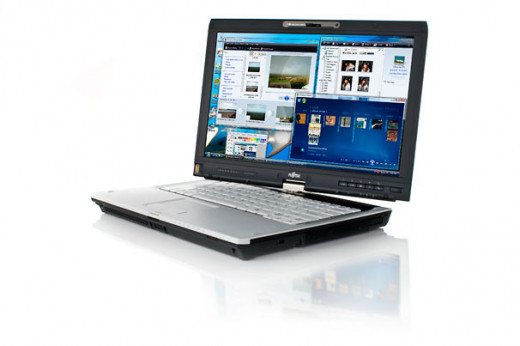
The excellent keyboard
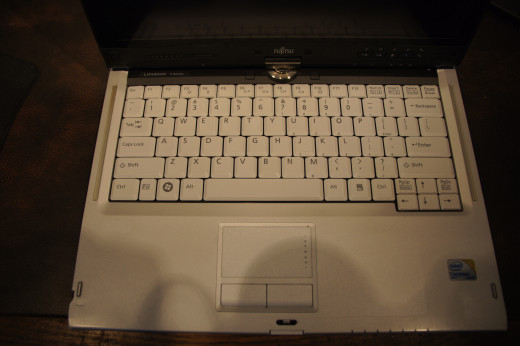
My Expenses
Component
| Price
|
|---|---|
Laptop
| $100
|
RAM
| $46
|
Hybrid Hard Drive
| $65
|
Total
| $211
|
The Fujitsu T5010 Specs
The Fujitsu T5010 is a business/student convertible tablet that first hit the market in 2009. When new, these units were priced between $1700 and $2100 depending on options. Sporting a rugged black alloy casing, the T5010 looks and feels very utilitarian. There is a very solid feel to this laptop, and everything feels well made. They keyboard is white and is said to be spill-proof. There is not even the slightest hint of chassis or keyboard flex... a very good thing.
The screen is 13.3-inch that is geared more toward writing and viewing documents than watching widescreen movies, which is perfect for me. Screen reflections are not a problem, and the color rendering is great. The screen is attached to the chassis of the laptop via a central swivel which allows the user to quickly switch from laptop to tablet mode. There is also an included digital pen for use with the touch screen (the touch screen only works with the pen, not your fingers).
The T5010 came with a variety of processor speeds. My particular laptop came with an Intel core 2 duo T9550, operating at 2.66GHz per core. There are two slots for DDR3 RAM modules, which allows for up to 8GB of RAM. An 80GB hard drive was commonly installed, although other hard drive options were available. The hard drive sits in a shock protected bay. The optical drive, which sits in the bay next to the hard drive, can be swapped out for an additional hard drive or an additional battery.
Plenty of ports were included. There are three USB ports, an SD card slot, wired internet, monitor, and mic/headphone jacks, and an express card slot
The back of the Fujitsu, showing the screws that had to be removed
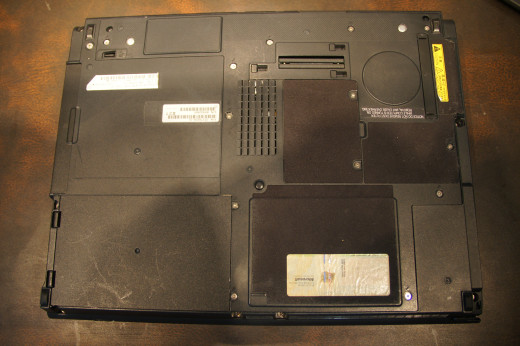
Installing RAM and Hard Drive
As I said earlier, I purchased this laptop separate from the hard drive and RAM modules, so these would need to be installed before I got the laptop running. I did a little searching on the Internet, and found some hard drive installation instructions. Simply flip the laptop upside-down. The hard drive/RAM area is accessed by removing a large black panel which is held in place by 13 small Phillips-head screws. Remove the screws and the panel lifts out.
The hard drive resides in a caddy. The caddy simply lifts from the laptop, revealing the four screws that mount the hard drive to the caddy. I removed these screws, placed the hard drive in the caddy, and then re-install the four screws. After that, I put the caddy back into the laptop.
The DDR3 modules were ridiculously easy to install. Like many laptops, there is a mounting point on the motherboard for the RAM modules. In the case of the Fujitsu, the RAM mounting point is in the center of the laptop. I simply pressed the RAM module into the mounting point and it snapped in place. I repeated this step for the second module, and then replaced the back cover to the laptop. The entire installation process took less than fifteen minutes.

